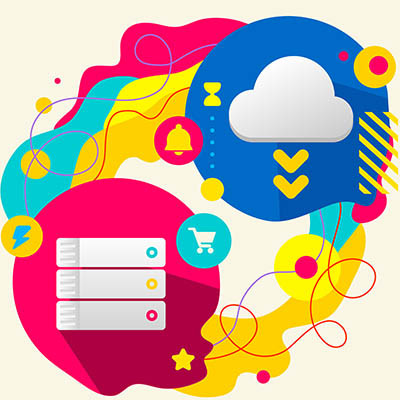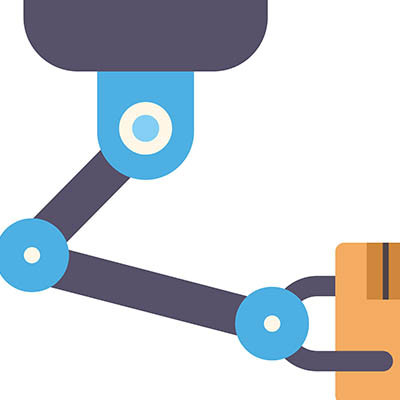The conversation around B2B data security is no longer about having a backup, but about whether your backup actually works when you need it most. Data backup and disaster recovery solutions were once seen as “set it and forget it” tools, but this is no longer the case. In reality, your data backup strategy is much more complex, and if you fail to give it the attention it deserves, it could result in an extinction-level event for your business.
Elite Systems Blog
Sometimes the scariest part of running a business is not knowing what tomorrow will bring, particularly when it comes to your IT. Break-fix IT is one of the leading causes of anxiety amongst small business owners, but it doesn’t have to be. Managed IT offers a reprieve from the chaos and the unknown so you can be confident about the direction your business is heading.
IT is more than a necessary expense; it’s a tool to get your business into a more advantageous position, one where you can make more money and help more people. The only way you can get to this point, however, is if your IT is yielding a return on your investment; otherwise, it will always feel like a money pit.
With the new year just around the corner, you’re probably wondering what the latest cybersecurity threats will have in store for small businesses like yours. One such threat is the rise of agentic AI, which capitalizes on the weakest link in any business’ cybersecurity infrastructure: its human elements. If you already have a hard time figuring out if the person on the other end of the phone line is human, just wait… It’s only going to get worse.
Prevention is better than a cure, as it prevents your business from ever experiencing the problem in the first place. This is especially true for your technology. When businesses invest in IT, they can do so for one of two reasons: they are repairing problems that are costing them in downtime, reputation, and capital, or they are actively preventing those problems through smart implementation of IT. Which side do you want to be on?
We offer preventative services that can help you control the cost of your IT solutions like never before, and here’s how we do it.
We’ve all been there: frustrated by the difficulty of installing new software, dealing with licenses that suddenly expire, or constantly needing to upgrade outdated tools just to keep them running. These are classic headaches that come with buying and owning software licenses. Thankfully, there’s a much smarter way to handle things: Software as a Service, or SaaS.
Technology is a double-edged sword: it supercharges business efficiency but also equips organizations like law enforcement with unprecedented power. Setting aside the immediate ethical debate, it is crucial to understand the sophisticated technologies certain agencies are leveraging in their operations; specifically, the advanced AI and data-mining platforms, such as those created by Palantir.
Be honest: Do you have a real plan for the day your server goes dark? We're not talking about a little glitch—we mean a full, sudden stop due to a failed disk, a nasty strain of ransomware, or an accidental keyboard slip. For too many businesses, the "plan" is just that dusty external drive they plug in at closing time. This isn't a strategy; it's a prayer, and one that will go unheard when you need it most.
That false comfort is your biggest IT blind spot, because if a simple copy-paste job was enough, we wouldn't see businesses vanish after a single data incident. Stop crossing your fingers and let's get you a recovery plan that actually works.
It's one of the most recognizable icons in modern digital design: three short, horizontal lines stacked neatly together. You've seen it countless times, representing the main menu on nearly every website and application. Sometimes it transforms into three dots—a "kabob" menu, if you want a fun fact, but its function remains the same: it's the gateway to everything your site has to offer.
For all its benefits, remote work has certainly created some challenges. One major issue is the lack of visibility you have over your employees and the ramifications that could result.
While it is critical to cultivate trust in and with your employees, you also need tools to monitor progress and hold your team members accountable. Let’s talk about some of the issues you may discover once we give you the visibility you need.
Manufacturing equipment costs a pretty penny, so you naturally expect it to drive profits and yield a return on investment. Yet, how often do these machines break down and cost you more than they should? By the time the red light turns on that tells you something’s wrong, you’ve already wasted precious time that you could have been saving with proactive, preventative maintenance.
Many businesses think of IT as nothing but an expense, often represented by losses on your budgeting reports. You might dump countless dollars into your IT only for it to eat it all up without providing any discernible return on investment. Here’s the truth about IT: when it’s managed properly, it can represent opportunity and investment rather than expense.
Let’s assume that, as a responsible business owner, you’ve established standard operating procedures for your employees to follow—including the tools they can officially use in the course of their tasks. That said, there is always the chance that someone encountered an issue and independently investigated and “fixed” it.
If anyone is using an unapproved tool or an external account to access and manipulate your business data, you have a problem… a problem known as shadow IT.
Antivirus is great and all, but it’s important in business to acknowledge that not all solutions you implement are equal. What seems like a good deal could actually put your business at risk. If your antivirus isn’t reliable, you can’t continue with business with the assurance that everything will be okay.
Many modern businesses rely on in-house server hardware, enjoying the perceived sense of security it provides. After all, you can see it, you can touch it, your data is literally at arm’s reach… what could happen?
Well, a brownout… and that’s just for starters.
While there are many benefits to an in-house infrastructure, there are also many shortcomings. For one, your business is among the most dangerous places to store your data.
You can’t wake up anymore without hearing something about AI, and in the business world, there’s almost a sense of peer pressure around it. Nowadays, you have to be using AI, or your business will be left behind… or at least, that’s the narrative.
While we are in no way discouraging you from adopting AI, we are saying that moving forward without a plan is likely to waste your money. For AI to work the way you want and need it to, you need to have done the homework and laid a foundation for success.
Artificial intelligence has reshaped the relationship that many people have with technology, and especially how we work and communicate. Despite this, there are plenty of challenges that the technology faces—especially if it wants to remain sustainable. Today, we want to look at the fuel that keeps these platforms running—the data center—and why it’s important to consider them in the context of the AI conversation.




















